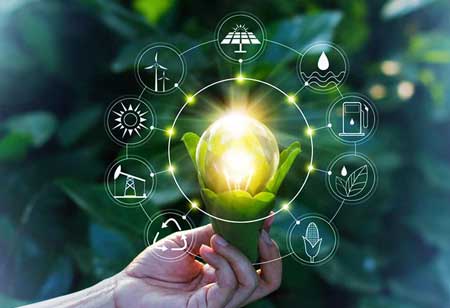Thank you for Subscribing to Energy Business Review Weekly Brief
Different Alternative Energy Sources
Renewable energy, generally called clean energy, is derived from natural sources or methods that are continuously replenished.

By
Energy Business Review | Wednesday, November 09, 2022
Stay ahead of the industry with exclusive feature stories on the top companies, expert insights and the latest news delivered straight to your inbox. Subscribe today.
Renewable energy, generally called clean energy, is derived from natural sources or continuously replenished methods.
FREMONT, CA: Renewable energy, generally called clean energy, is derived from natural sources or methods that are continuously replenished. For instance, sunlight and wind keep glowing and blowing, even if their availability relies on time and weather.
Many Different Alternative Energy Sources are:
1. Hydroelectric power
Hydropower is the greatest renewable energy origin for electricity in the United States, although wind energy is soon expected to undertake the lead. Hydropower relies on the water—generally fast-moving water in a large river or promptly descending water from a high point—and transforms the force of that water into power by revolving a generator's turbine blades.
Nationally and internationally, massive hydroelectric plants—or mega-dams—are usually considered to be nonrenewable energy. Mega-dams distract and lower natural flows, limiting access for animal and human populations that depend on those rivers. Small hydroelectric plants (an installed capacity below 40 megawatts), cautiously managed, do not be prone to cause as much environmental impairment as they distract only a fraction of the flow.
2. Biomass energy
Biomass is organic matter from plants and animals and includes crops, wood waste, and trees. When biomass is burnt, the chemical energy is discharged as heat and can produce electricity with a steam turbine.
Biomass is often falsely explained as a clean, renewable fuel and a greener substitute for coal and other fossil fuels for generating electricity. Still, recent science indicates that many forms of biomass—especially from forests—produce greater carbon emissions than fossil fuels. There are also adverse consequences for biodiversity. Still, some types of biomass energy could serve as a low-carbon choice under the proper circumstances. For instance, sawdust and chips from sawmills that would else quickly decompose and discharge carbon can be a low-carbon energy source.
3. Geothermal energy
If you've ever settled in a hot spring, you've utilized geothermal energy. The earth's center is about as hot as the sun's surface because of the slow decay of radioactive particles in rocks at the planet's center. Drilling deep wells bring very hot subsoil water to the surface as a hydrothermal resource, pumped through a turbine to create electricity.
Geothermal plants generally have low discharge if they pump the steam and water they utilize back into the reservoir. There are ways to create geothermal plants with no underground reservoirs, but there are concerns that they may raise the risk of an earthquake in areas already deemed geological hot spots.
4. Ocean
Tidal and wave energy are in the formative phase, but the ocean will often be ruled by the moon's gravity, which makes gaining its power an attractive option. Some tidal energy methods may harm wildlife, like tidal barrages, which work like dams and are positioned in an ocean bay or lagoon. Similar to tidal power, wave power depends on dam-like structures or ocean floor–anchored gadgets on or under the water's surface.






